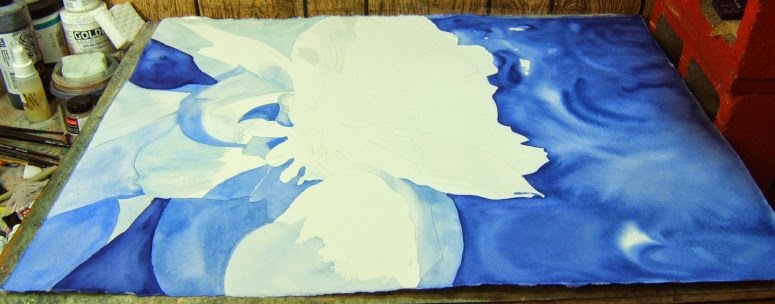In the latest Daniel Smith newsletter, I learned that Monday, September 29th is National Coffee Day. As many people as there are, all over the world, who drink coffee, shouldn't that be International Coffee Day? Anyway, to treat myself, I ordered the new Mermaid Mug from Starbucks. So pretty!!! It's a bit more greenish blue than this is showing (it's on a blue top so that's influencing the color a bit. I've read that it comes in a variety of colors from greenish to bluish. The handle is a bit hard to handle (that pun was not intended!) because it's hard on the finger as you place it inside - perhaps needed to be a bit more rounded? I'm sure it's a different feel for everyone who tries this, depending on the size of their hands, etc.
Not sure if the Mermaid Cup will become my new favorite cup, because this one has been my favorite for years (purchased at an art store in Rising Sun, Indiana and handmade by an artist named Karen Branch in 2002). I love the look and feel of it.
I am such an organic girl. I love anything natural, from acorns and leaves to birds and water...not much for hard, manmade items. Guess that shows in my artwork, too. Rounded, organic shapes seem to be the focus.
What is your favorite cup or favorite coffee drink (I did buy some caramel syrup from Starbucks, too - that time of year for sweet, caramel drinks in the cool of the morning.
I hope you are having a wonderful Autumn so far. I think I will have to draw and paint both of these cups, to help celebrate National Coffee Day. (I'm sure there's a National Tea Day, too; and maybe a National Milk Day and...who knows?)


















































